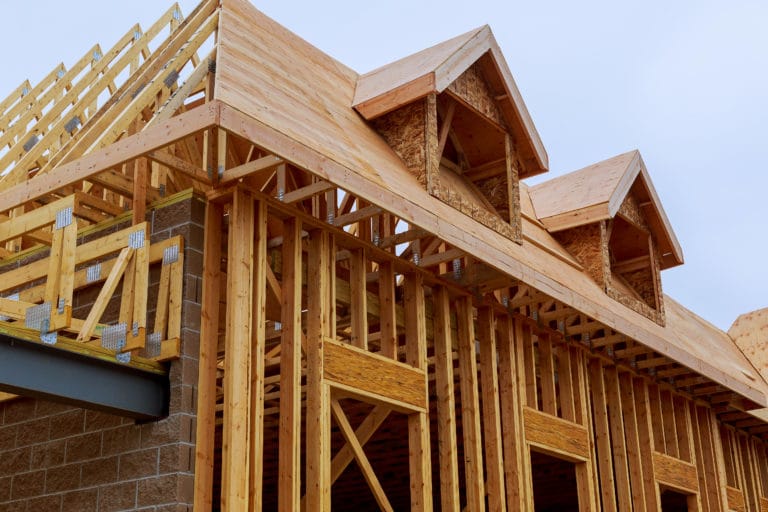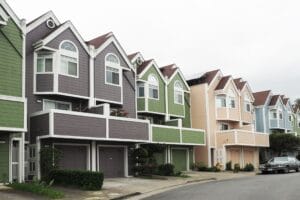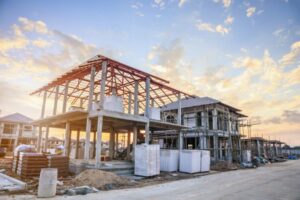Orange County Register: More homes (not more government) needed to make housing affordable

Nearly everyone today recognizes that housing costs are too high in California. With a median home price over one million dollars in Orange County, even upper-middle-class families face the reality of their kids and grandkids moving on mass to states where housing costs don’t eclipse every other need. The past few years of price increases (both homes and rents) have put poorer residents in crisis.
The latest scheme offered by politicians to make homeownership more accessible is the California Dream for All program, touted recently in these pages. It turns the state into an investment partner with first-time homebuyers, raising billions with government bonds for a fund to provide interest-free second mortgages for up to 30 percent of a home’s cost (with the buyer investing 3 percent or more). It gets the money back when the house is later sold or refinanced, repaying the loan plus 20 percent of any increase in the home’s price. If home prices fall, the fund or the taxpayers will absorb the loss.
However, this program is premised on an upside-down view of the problem, which is counterproductive. Homes cost too much in California not because buyers can’t afford them but because there is a profound lack of supply and that shortage is almost entirely a function of regulation.
The only way to make housing affordable is to build (much) more of it. But land use regulations throughout the state make it illegal to build enough homes in the locations and varieties needed to serve people at all income levels. Most of those regulations did not exist — or were not as complicated and costly — before the 1970s when people optimistically moved here in pursuit of the “California Dream.”
Environmental regulations, such as the Endangered Species Act (1973), Clean Water Act (1972), and California Environmental Quality Act (1970), take vast amounts of land off the table for development. Even where the regulations allow permits, litigation in the name of the environment often makes development impossible without meaningful public health benefits. Exclusionary zoning policies at the local level outlaw building homes except on “large lots” that drive prices higher. Apartments are relatively easier to build in some Orange County cities, like Irvine but remain mostly illegal except in small corridors of land throughout the county and across the state. One can add a long list of additional regulations to these examples.
Goosing the demand for houses by adding state money to the budgets of buyers bidding on existing homes doesn’t make housing affordable. Boosting demand where supply remains constrained tends instead to increase home prices.
The program may give the buyers it aims to assist (about 7500 per year) a step up but pulls the first rung of the property ladder up a little higher for tens of millions of Californians not granted the state’s help. The program’s biggest beneficiaries are likely to be existing homeowners who can now add state cash to the list of regulations that have artificially increased their home values for years.
Once one recognizes that the affordability problem is a regulation-induced shortage of the right types of homes in the right locations, better solutions emerge. We don’t need the standard list of government-led proposals coming from too many housing advocates today, such as rent controls, building mandates, public housing, or exotic state investment programs.
We need more respect for the property rights of landowners and the private enterprise of builders to abundantly produce new homes.
In recent years the state has enacted legislation to make it easier to build granny flats as well as duplexes and other small projects in areas where anything but a single-family home was previously illegal. That has added some units to niche segments of the market, providing welcome housing to many. But as the California Dream for All program advocates point out, only 26 percent of California households today earned an annual income reasonably needed to buy a median-priced, single-family home last year. Prices have only risen since then. A problem of that magnitude cannot be fixed without eliminating barriers to the production of housing.
The California Dream is a phrase that once beckoned outsiders with opportunity and the promise of a better life. A home of one’s own is represented in movies, history books, and the popular mind as a key part of it. But laws squelching homebuilding have put that dream to sleep for all but the wealthiest today.
Achieving the “California Dream for all” will take something much bigger than a new government program, yet much simpler: freedom to build.
This op-ed was originally published in the Orange County Register on August 18, 2022.












